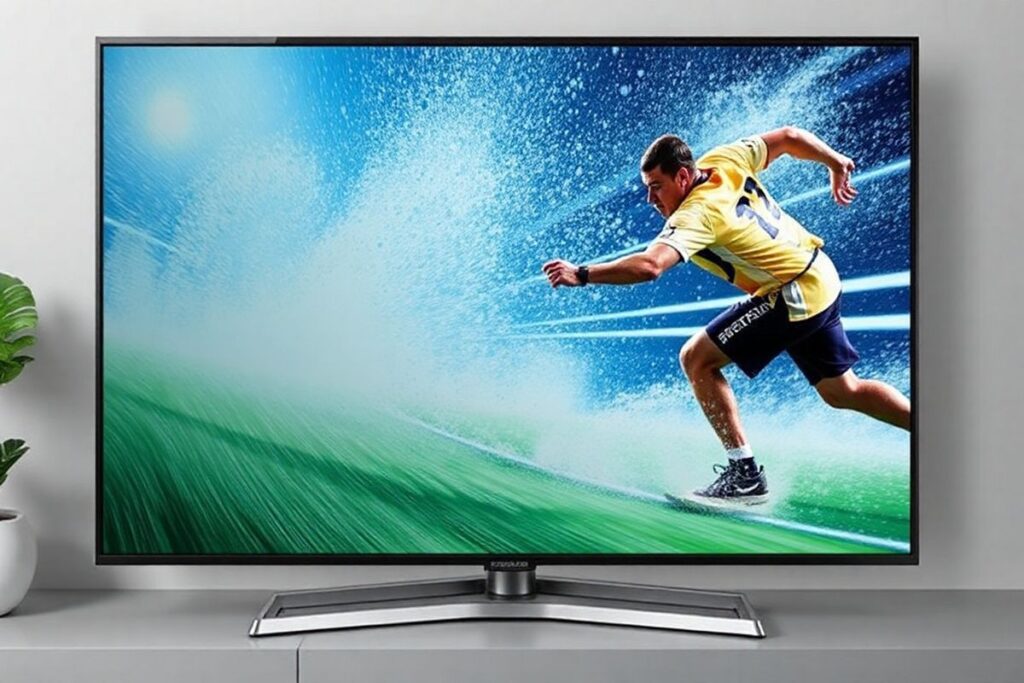For those who crave heart-pounding action and lightning-fast gameplay, a standard TV just won’t cut it. Motion blur can transform thrilling car chases into blurry messes and crucial sporting moments into indistinguishable blurs. This is where motion clarity TVs step in, offering a viewing experience that keeps up with even the most rapid on-screen movements. These televisions utilize advanced technologies to minimize motion blur, ensuring a crisp, clear picture that captures every detail, no matter how fast the action unfolds. From the subtle flicker of a hummingbird’s wings to the explosive impact of a game-winning goal, motion clarity TVs deliver an unparalleled level of immersion, pulling you into the heart of the action like never before. Choosing the right motion clarity TV can be daunting with so many options available. This guide will explore 15 standout models, highlighting their key features and benefits to help you find the perfect match for your entertainment needs.
Understanding Motion Clarity Technology

Refresh Rate and Response Time
Two key factors contribute to a TV’s motion clarity: refresh rate and response time. Refresh rate, measured in Hertz (Hz), indicates how many times per second the image on the screen refreshes. A higher refresh rate, such as 120Hz or 240Hz, generally results in smoother motion. Response time, measured in milliseconds (ms), refers to how quickly a pixel can change color. A lower response time minimizes ghosting and blurring, ensuring that fast-moving objects remain sharp and defined.
The interplay between these two specifications is crucial. A high refresh rate alone isn’t enough; a slow response time can still introduce motion blur. Look for TVs that combine a high refresh rate with a low response time for the best motion clarity performance. This combination ensures that the screen can keep up with the action, delivering a fluid and immersive viewing experience.
Understanding these technical aspects is essential for making an informed decision when choosing a motion clarity TV. Don’t be swayed by marketing jargon alone; delve into the specifications and compare refresh rates and response times to find the best fit for your viewing preferences.
Motion Interpolation and Black Frame Insertion
Many modern TVs employ techniques like motion interpolation and black frame insertion to further enhance motion clarity. Motion interpolation creates artificial frames and inserts them between actual frames, increasing the perceived frame rate and smoothing out motion. Black frame insertion inserts black frames between regular frames, reducing motion blur but potentially dimming the overall image.
While these technologies can be beneficial, they can also introduce artifacts like the “soap opera effect,” where movies appear unnaturally smooth. Many TVs allow you to adjust the intensity of these features, or even disable them entirely. Experiment with these settings to find the balance that works best for you.
It’s important to note that the effectiveness of these technologies can vary depending on the implementation. Some manufacturers have developed proprietary motion enhancement techniques that outperform generic solutions. Research specific models and read reviews to understand how well these features are implemented.
Top 15 Motion Clarity TVs
Premium Models
For those seeking the absolute best in motion clarity, premium models offer cutting-edge technology and unparalleled performance. These TVs often incorporate advanced backlighting systems, local dimming, and high-end motion processing algorithms to deliver the most immersive viewing experience.
Expect to pay a premium for these top-tier models, but the investment is often worthwhile for serious gamers and cinephiles. These TVs excel at handling fast-paced action, ensuring that every detail remains crisp and clear, even in the most demanding scenes.
Consider factors such as screen size, resolution, and other features when choosing a premium model. While motion clarity is crucial, it’s important to find a TV that meets all of your entertainment needs.
Mid-Range Options
Mid-range motion clarity TVs offer a compelling balance of performance and affordability. These models often incorporate many of the same technologies found in premium models, but at a more accessible price point.
They may not offer the absolute peak performance of the top-tier options, but they still provide excellent motion clarity for most users. These TVs are a great choice for those who want a smooth and immersive viewing experience without breaking the bank.
Carefully compare specifications and features within this range to find the best value. Look for models that prioritize motion clarity while also offering a good overall picture quality and smart TV functionality.
Budget-Friendly Choices
Even on a budget, you can find TVs that offer decent motion clarity. While these models may not boast the same advanced technologies as their more expensive counterparts, they can still provide a noticeable improvement over standard TVs.
Look for models with higher refresh rates and lower response times within your budget. While features like motion interpolation may be limited, these basic specifications can still make a significant difference in motion clarity.
Don’t expect the same level of performance as premium or mid-range models, but budget-friendly options can still provide a satisfactory viewing experience for casual viewers.
Comparing Key Features
Panel Technology
Different panel technologies, such as OLED, QLED, and LED, can impact motion clarity. OLED panels generally offer superior response times, resulting in minimal motion blur. QLED and LED TVs have also made significant strides in motion handling, with some models offering impressive performance.
Consider the strengths and weaknesses of each panel technology when making your decision. OLED excels in black levels and contrast, while QLED offers high brightness and vibrant colors. LED TVs provide a more affordable option with good overall picture quality.
Researching the specific panel technology used in each model can help you understand its potential impact on motion clarity and overall picture quality.
| Feature | Model A | Model B | Model C |
|---|---|---|---|
| Refresh Rate | 120Hz | 240Hz | 60Hz |
| Response Time | 1ms | 2ms | 5ms |
- Consider your viewing habits.
- Set a budget.
- Read reviews.

Leave a Reply